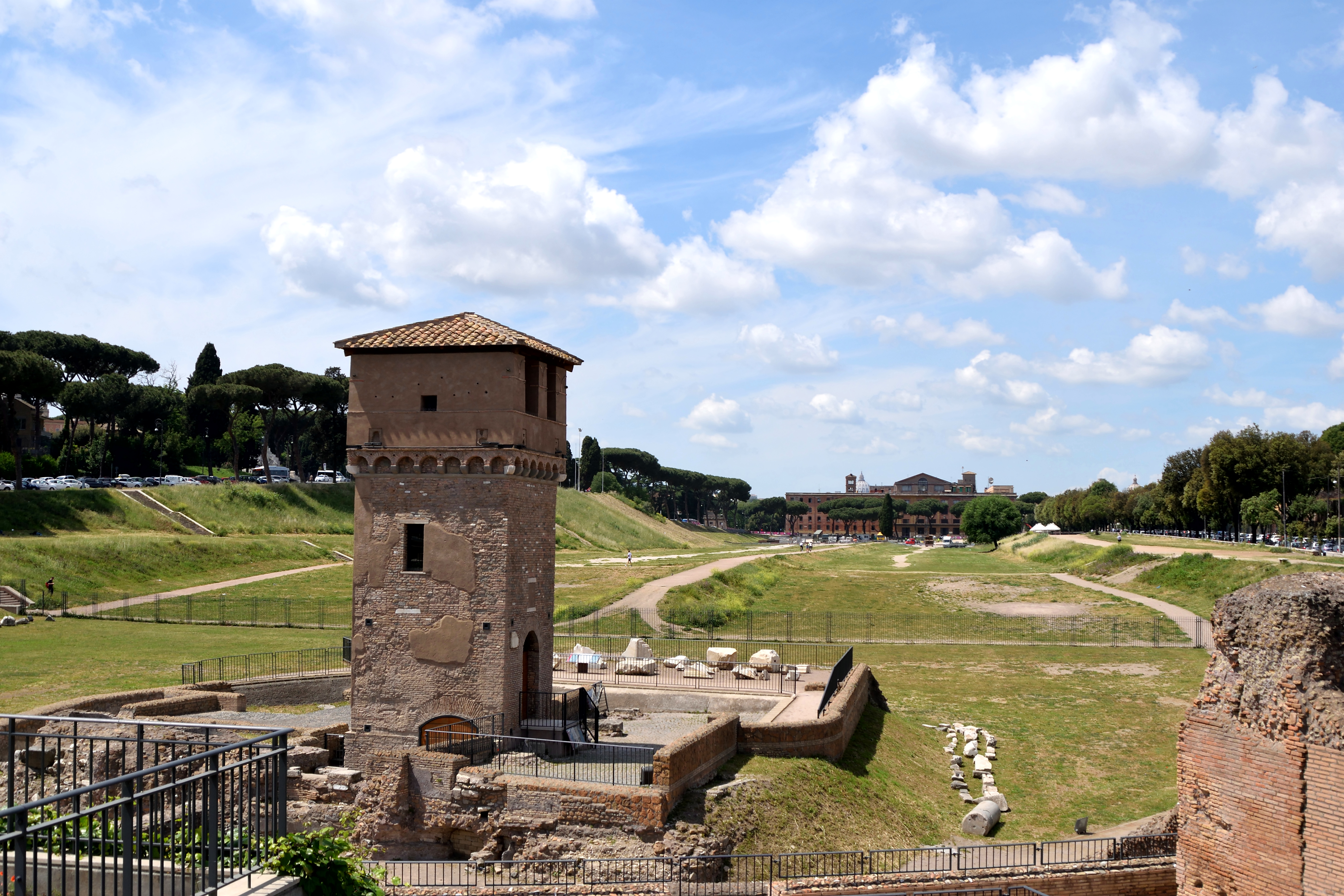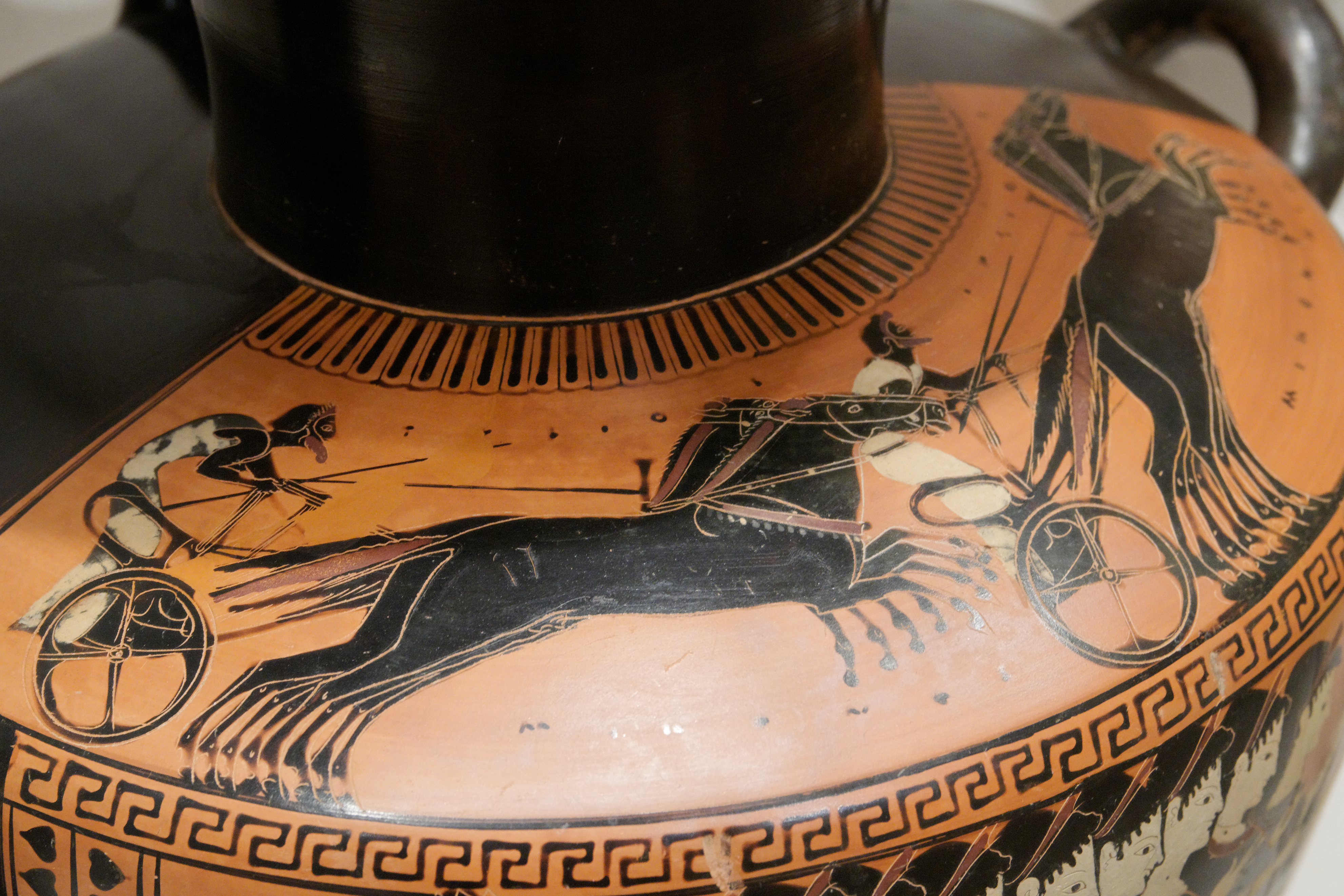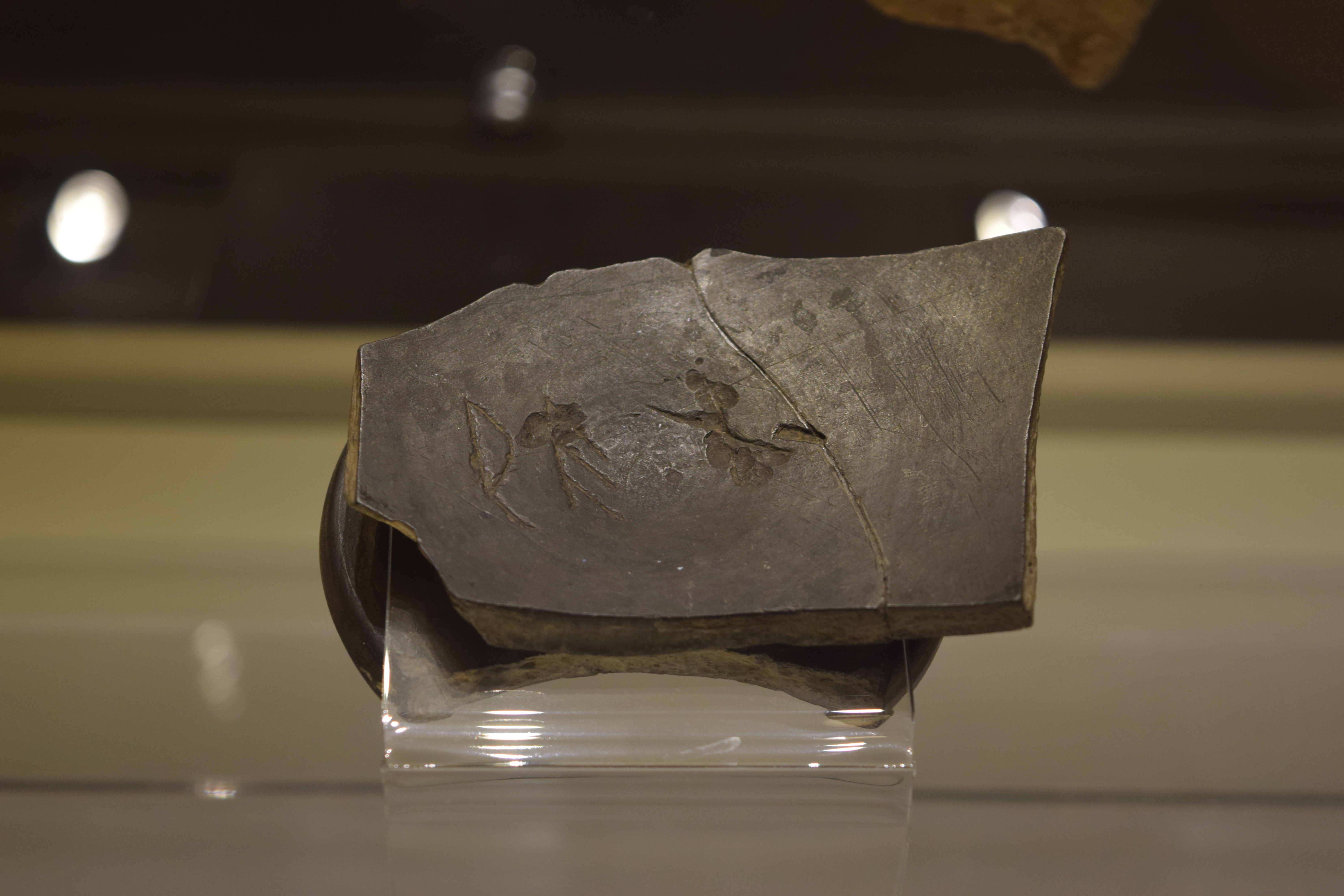|
Opalia
The Opiconsivia (or Opeconsiva or Opalia) was an ancient Roman religious festival held August 25 in honor of Ops ("Plenty"), also known as Opis, a goddess of agricultural resources and wealth. The festival marked the end of harvest, with a mirror festival on December 19 concerned with the storage of the grain.J. Rufus Fears, "The Cult of Virtues and Roman Imperial Ideology," ''Aufstieg und Niedergang der römischen Welt'' II.17.2 (1981), p. 838. The Latin word ''consivia'' (or ''consiva'') derives from ''conserere'' ("to sow"). Opis was deemed a chthonic (underworld, inside the earth) goddess who made the vegetation grow. Since her abode was inside the earth, Ops was invoked by her worshipers while sitting, with their hands touching the ground, according to Macrobius (Saturnalia, I:10). Although Ops is a consort of Saturn, she was closely associated with Consus, the protector of grains and subterranean storage bins (silos). Consus is therefore thought to be an alternate name of ... [...More Info...] [...Related Items...] OR: [Wikipedia] [Google] [Baidu] |
Consus
In ancient Roman religion, the god Consus was the protector of grains. He was represented by a grain seed. His altar ''(ara)'' was located at the first ''meta'' of the Circus Maximus. It was either underground, or according to other sources, covered with earth, which was swept off during the two Consualia, his festivals on August 21, December 15, and on July 7 when the pontiffs held a sacrifice there. He was thus a chthonic god. The ''Flamen Quirinalis'' and the Vestals officiated at his rites. Etymology The etymology of the name ''Consus'' is uncertain. It may be of Etruscan or Sabine origin. In the folk etymology of antiquity, the name was related to the Latin verb ''conserere'', "to sow," as was the title of the goddess Ops as ''Consivia'' or ''Consiva''. The late Republican theologian Varro said that the Consualia were named for Consus. G. Dumézil and G. Capdeville consider verb ''condere'', "to store", to be the best etymology: ''Consus'' would be an arch ... [...More Info...] [...Related Items...] OR: [Wikipedia] [Google] [Baidu] |
Roman Festival
Festivals in ancient Rome were a very important part in religion in ancient Rome, Roman religious life during both the Roman Republic, Republican and Roman Empire, Imperial eras, and one of the primary features of the Roman calendar. ''Feriae'' ("holidays" in the sense of "holy days"; singular also ''feriae'' or ''dies ferialis'') were either public ''(publicae)'' or private ''(privatus, privatae)''. State holidays were celebrated by the Roman people and received public funding. Games ''(ludi)'', such as the Ludi Apollinares, were not technically ''feriae'', but the days on which they were celebrated were ''Glossary of ancient Roman religion#festus, dies festi'', holidays in the modern sense of days off work. Although ''feriae'' were paid for by the state, ''ludi'' were often funded by wealthy individuals. ''Feriae privatae'' were holidays celebrated in honor of private individuals or by families. This article deals only with public holidays, including rites celebrated by the ... [...More Info...] [...Related Items...] OR: [Wikipedia] [Google] [Baidu] |
Consualia
The Consualia or ''Consuales Ludi'' was the name of two ancient Roman festivals in honor of Consus, a tutelary deity of the harvest and stored grain. ''Consuales Ludi'' harvest festivals were held on August 21,Plutarch. "Life if Romulus", in ''Plutarch's Lives,'' trans. Aubrey Stewart and George Long. London and New York: George Bell and Sons, 1894XV/ref> and again on December 15, in connection with grain storage. The shrine of Consus was underground, it was covered with earth all year and was only uncovered for this one day. Mars, the god of war, as a protector of the harvest, was also honored on this day, as were the Lares, the household gods that individual families held sacred. During the celebration horses, mules, and asses were exempted from all labour, and were led through the streets adorned with garlands and flowers. Chariot races were held this day in the Circus Maximus, which included an odd race in which chariots were pulled by mules. In Roman mythology, the Consuali ... [...More Info...] [...Related Items...] OR: [Wikipedia] [Google] [Baidu] |
Religion In Ancient Rome
Religion in ancient Rome consisted of varying imperial and provincial religious practices, which were followed both by the people of Rome as well as those who were brought under its rule. The Romans thought of themselves as highly religious, and attributed their success as a world power to their collective piety ''(pietas)'' in maintaining Pax deorum, good relations with the gods. Their Polytheism, polytheistic religion is known for having honored List of Roman deities, many deities. The presence of Magna Graecia, Greeks on the Italian peninsula from the beginning of the historical period influenced Culture of ancient Rome, Roman culture, introducing some religious practices that became fundamental, such as the ''Cult (religious practice), cultus'' of Apollo. The Romans looked for common ground between their major gods and those of the Greeks (''interpretatio graeca''), adapting Greek mythology, Greek myths and iconography for Latin literature and Roman art, as the Etruscans h ... [...More Info...] [...Related Items...] OR: [Wikipedia] [Google] [Baidu] |
Priest
A priest is a religious leader authorized to perform the sacred rituals of a religion, especially as a mediatory agent between humans and one or more deities. They also have the authority or power to administer religious rites; in particular, rites of sacrifice to, and propitiation of, a deity or deities. Their office or position is the 'priesthood', a term which also may apply to such persons collectively. A priest may have the duty to hear confessions periodically, give marriage counseling, provide prenuptial counseling, give spiritual direction, teach catechism, or visit those confined indoors, such as the sick in hospitals and nursing homes. Description According to the trifunctional hypothesis of prehistoric Proto-Indo-European society, priests have existed since the earliest of times and in the simplest societies, most likely as a result of agricultural surplus and consequent social stratification. The necessity to read sacred texts and keep temple or church rec ... [...More Info...] [...Related Items...] OR: [Wikipedia] [Google] [Baidu] |
Ancient Roman Festivals
Ancient history is a time period from the beginning of writing and recorded human history to as far as late antiquity. The span of recorded history is roughly 5,000 years, beginning with the Sumerian cuneiform script. Ancient history covers all continents inhabited by humans in the period 3000 BCAD 500. The three-age system periodizes ancient history into the Stone Age, the Bronze Age, and the Iron Age, with recorded history generally considered to begin with the Bronze Age. The start and end of the three ages varies between world regions. In many regions the Bronze Age is generally considered to begin a few centuries prior to 3000 BC, while the end of the Iron Age varies from the early first millennium BC in some regions to the late first millennium AD in others. During the time period of ancient history, the world population was already exponentially increasing due to the Neolithic Revolution, which was in full progress. While in 10,000 BC, the world population stood at ... [...More Info...] [...Related Items...] OR: [Wikipedia] [Google] [Baidu] |
Mule
The mule is a domestic equine hybrid between a donkey and a horse. It is the offspring of a male donkey (a jack) and a female horse (a mare). The horse and the donkey are different species, with different numbers of chromosomes; of the two possible first-generation hybrids between them, the mule is easier to obtain and more common than the hinny, which is the offspring of a female donkey (a jenny) and a male horse (a stallion). Mules vary widely in size, and may be of any color. They are more patient, hardier and longer-lived than horses, and are perceived as less obstinate and more intelligent than donkeys. Terminology A female mule that has oestrus cycles, and which could thus in theory carry a foetus, is called a "molly" or "Molly mule", though the term is sometimes used to refer to female mules in general. A male mule is properly called a "horse mule", though often called a "john mule", which is the correct term for a gelded mule. A young male mule is called a "mule co ... [...More Info...] [...Related Items...] OR: [Wikipedia] [Google] [Baidu] |
Horse
The horse (''Equus ferus caballus'') is a domesticated, one-toed, hoofed mammal. It belongs to the taxonomic family Equidae and is one of two extant subspecies of ''Equus ferus''. The horse has evolved over the past 45 to 55 million years from a small multi-toed creature, ''Eohippus'', into the large, single-toed animal of today. Humans began domesticating horses around 4000 BCE, and their domestication is believed to have been widespread by 3000 BCE. Horses in the subspecies ''caballus'' are domesticated, although some domesticated populations live in the wild as feral horses. These feral populations are not true wild horses, as this term is used to describe horses that have never been domesticated. There is an extensive, specialized vocabulary used to describe equine-related concepts, covering everything from anatomy to life stages, size, colors, markings, breeds, locomotion, and behavior. Horses are adapted to run, allowing them to quickly escape predators, and po ... [...More Info...] [...Related Items...] OR: [Wikipedia] [Google] [Baidu] |
Circus Maximus
The Circus Maximus (Latin for "largest circus"; Italian: ''Circo Massimo'') is an ancient Roman chariot-racing stadium and mass entertainment venue in Rome, Italy. In the valley between the Aventine and Palatine hills, it was the first and largest stadium in ancient Rome and its later Empire. It measured in length and in width and could accommodate over 150,000 spectators. In its fully developed form, it became the model for circuses throughout the Roman Empire. The site is now a public park. Events and uses The Circus was Rome's largest venue for ''ludi'', public games connected to Roman religious festivals. ''Ludi'' were sponsored by leading Romans or the Roman state for the benefit of the Roman people (''populus Romanus'') and gods. Most were held annually or at annual intervals on the Roman calendar. Others might be given to fulfil a religious vow, such as the games in celebration of a triumph. In Roman tradition, the earliest triumphal ''ludi'' at the Circus were ... [...More Info...] [...Related Items...] OR: [Wikipedia] [Google] [Baidu] |
Chariot Race
Chariot racing ( grc-gre, ἁρματοδρομία, harmatodromia, la, ludi circenses) was one of the most popular ancient Greek, Roman, and Byzantine sports. In Greece, chariot racing played an essential role in aristocratic funeral games from a very early time. With the institution of formal races and permanent racetracks, chariot racing was adopted by many Greek states and their religious festivals. Horses and chariots were very costly. Their ownership was a preserve of the wealthiest aristocrats, whose reputations and status benefitted from offering such extravagant, exciting displays. Their successes could be further broadcast and celebrated through commissioned odes and other poetry. In standard racing practise, each chariot held a single driver and was pulled by four horses, or sometimes two. Drivers and horses risked serious injury or death through collisions and crashes; this added to the excitement and interest for spectators. Most charioteers were slaves or contracte ... [...More Info...] [...Related Items...] OR: [Wikipedia] [Google] [Baidu] |
Vestal Virgins
In ancient Rome, the Vestal Virgins or Vestals ( la, Vestālēs, singular ) were priestesses of Vesta, virgin goddess of Rome's sacred hearth and its flame. The Vestals were unlike any other public priesthood. They were chosen before puberty from a number of suitable candidates, freed from any legal ties and obligations to their birth family, and enrolled in Vesta's priestly college of six priestesses. They were supervised by a senior vestal but chosen and governed by Rome's leading male priest, the ; in the Imperial era, this meant the emperor. Successful acolytes vowed to serve Vesta for at least thirty years, to study and practise her rites in service of the Roman State, and to maintain their chastity throughout. As well as their obligations on behalf of Rome, Vestals had extraordinary rights and privileges, some of which were granted to no others, male or female. The Vestals took it in turns to supervise Vesta's hearth, so that at least one Vestal was stationed there at a ... [...More Info...] [...Related Items...] OR: [Wikipedia] [Google] [Baidu] |
Regia
The Regia ("Royal house") was a two-part structure in Ancient Rome lying along the Via Sacra at the edge of the Roman Forum that originally served as the residence or one of the main headquarters of kings of Rome and later as the office of the '' pontifex maximus'', the highest religious official of Rome. It occupied a triangular patch of terrain between the Temple of Vesta, the Temple of Divus Julius and Temple of Antoninus and Faustina. Only the foundations of Republican/Imperial Regia remain. Like the Curia it was destroyed and rebuilt several times, as far back as the Roman monarchy. Studies have found multiple layers of similar buildings with more regular features, prompting the theory that this "Republican Regia" was to have a different use. History According to ancient tradition it was built by the second king of Rome, Numa Pompilius, as a royal palace. Indeed, the Latin term ''regia'' can be translated as ''royal residence''. It is said that he also built the Temple ... [...More Info...] [...Related Items...] OR: [Wikipedia] [Google] [Baidu] |









